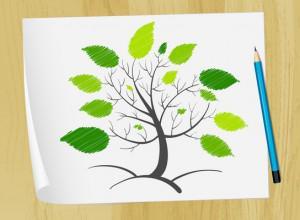It’s no small coincidence that we use the word “green” to describe eco-friendly living, because it usually requires some “green” money to make the transition to that lifestyle. Energy-efficient light bulbs, organic and natural foods can make a quick trip to the store expensive.

Green eating
Organic produce can be expensive, so many people are increasingly choosing to grow their own produce. This is tough for homeowners in certain environments – especially for the 82.6 percent of Americans who live in metropolitan areas – but box gardens have become a popular way to easily create ideal gardening conditions in any location. You can start your own small box garden for about $40.
Box gardening allows you to customize your gardens, dedicating individual square footage to fruits and vegetables of your choice. By planning your garden based on the produce you most commonly buy at the supermarket, you can greatly reduce your grocery bill. And instead of relying on trains, trucks and other heavy polluters to transport your food from the farm to your table, you can simply walk into the backyard to pick food as needed. Save some of your crop to keep a supply of seeds for the next season and compost your waste to make this project even better for both the environment and your bank account.

Green power
Your roof collects a lot of sunlight throughout the day. By covering that empty space with solar panels, you can convert sunshine into usable electricity for your home. This clean energy can significantly decrease your monthly utility costs.
Of course, clean energy is not without its costs. You’ll need to work with a contractor to determine your specific needs, but most solar panels systems can output one watt per square foot in your home. You’ll need an inverter that can take DC voltage from solar radiation and convert it into the AC power your home needs. These systems can cost as much as $35,000 to buy and install, but many local governments and power utility companies offer a number of tax breaks and grants for people who invest in solar power. Once your system starts generating power, you’ll also likely qualify for net metering benefits that account for the energy your home puts back into the grid.
You may already know that simple home-improvement projects can add resale value to your home, but additions like solar panels can result in a significantly higher selling price.
Smart investments
Many components of green living – efficient appliances, for example – require an initial investment. But the long-term savings and benefit for the environment make such choices well worth the cost.

